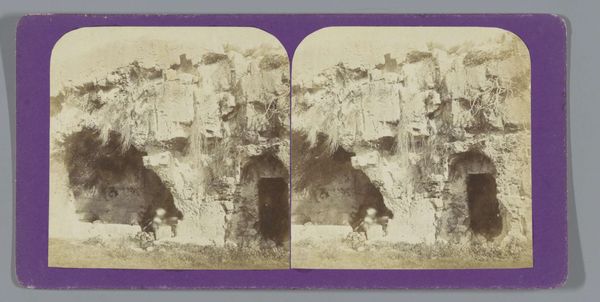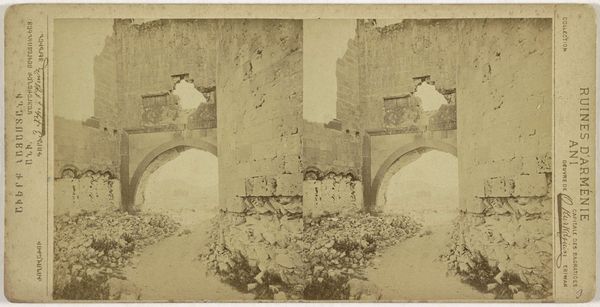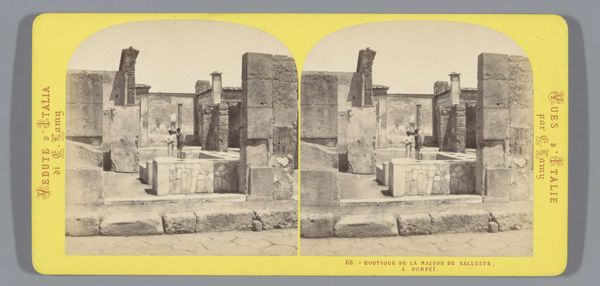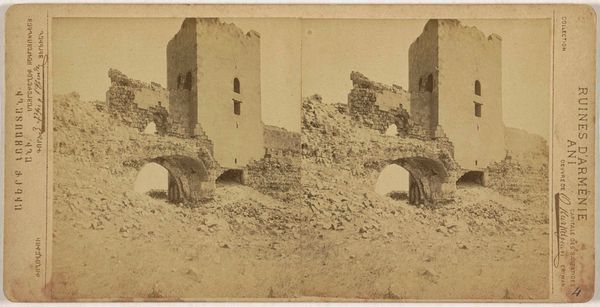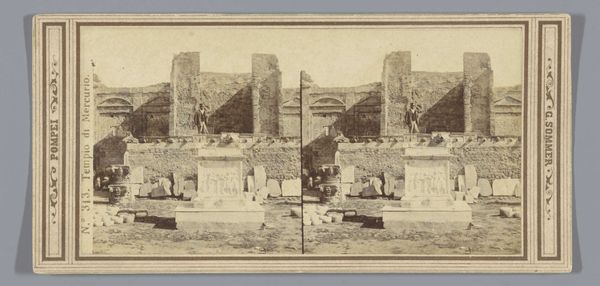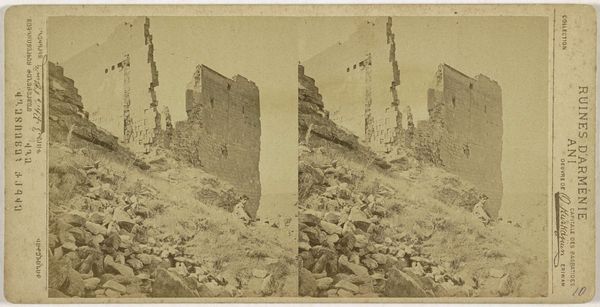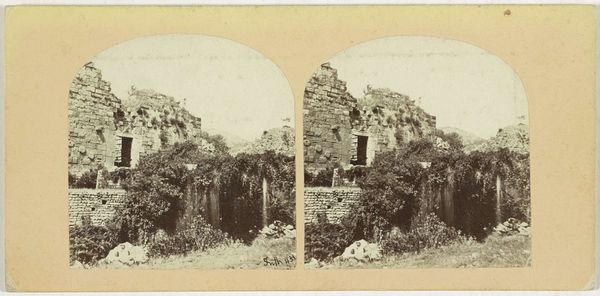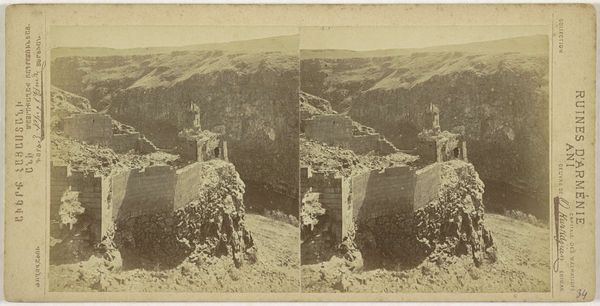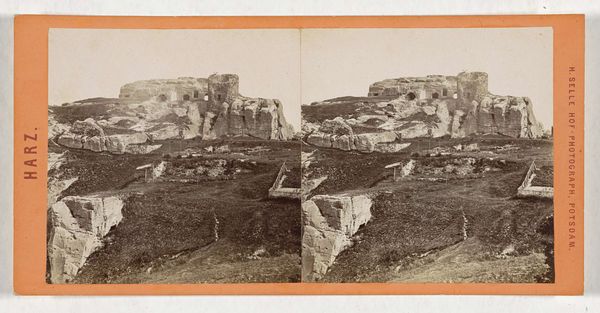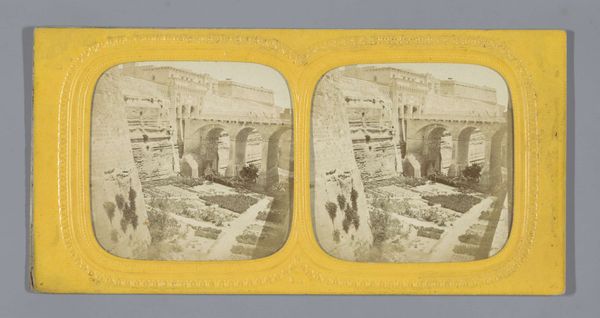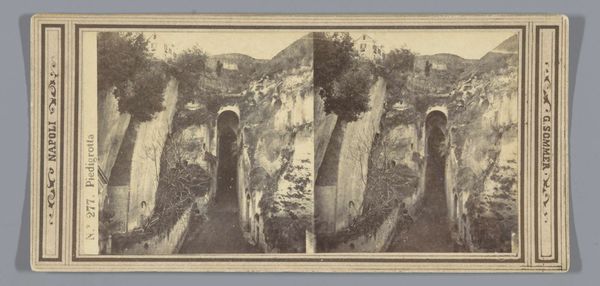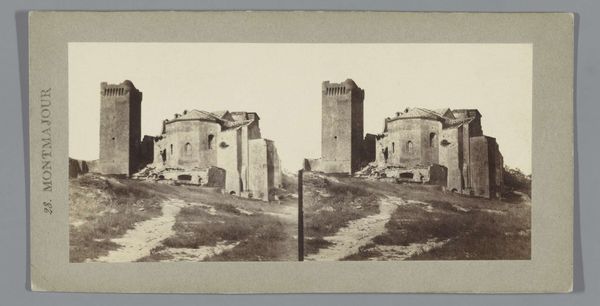
photography, albumen-print
#
landscape
#
photography
#
ancient-mediterranean
#
orientalism
#
albumen-print
Dimensions: height 90 mm, width 178 mm
Copyright: Rijks Museum: Open Domain
Curator: This albumen print, dating from 1875-1880, captures a gevelsteen, a kind of relief sculpture depicting a lion, next to the Leeuwenpoort in Ani. It was taken by Onnes Kurkdjian. The image encapsulates a moment in time, showing the ruins of this ancient Armenian capital. Editor: My first impression? It’s melancholic. The crumbling stonework and muted tones create an immediate sense of loss and decay. Curator: Indeed, this photo presents a romanticized view of decay, a common theme within the Orientalist movement. It's less about precise documentation and more about evoking a mood tied to the imagined "East," and the fall of civilizations. Photography here serves as a medium for projecting Western fantasies. Editor: Still, there's an intriguing contrast in textures, isn't there? The roughly hewn stones at the base against the relatively smooth wall plane punctuated by voids create an almost tactile experience for the viewer. I want to know more about that stonework— the modular aspect that creates this tessellated pattern on the structure. Curator: This area became accessible in part due to shifting political power dynamics. Consider how Kurkdjian's work served as both documentation and propaganda, influencing perceptions of this politically fraught region for a Western audience keen on romantic exoticism. These images shaped ideas and justified interventions. Editor: I’m more interested in how Kurkdjian framed the remnants. The balance between light and shadow seems carefully considered to emphasize the sculptural elements and accentuate the ruin’s palpable gravitas, to your point about invoking emotion. The repetition of these square forms— the ashlars of stone block— lend an architectural stability ironically, too, as if asserting its perseverance across time. Curator: Exactly, photography itself gains credibility by presenting an image as truthful. These works solidified stereotypes and fueled power dynamics still evident today. The choice of such an imposing, even totemic animal symbol beside the entrance... What meanings were lost, and which meanings get layered on? Editor: We seem to arrive, regardless, at this sense of something passed, that haunts. The very fact we’re discussing an image of a lost capital… it underscores the ephemeral nature of even the most impressive architecture. A powerful work, no matter its political valence. Curator: A haunting image of lost power, reclaimed and reshaped through photographic technologies and a colonial gaze.
Comments
No comments
Be the first to comment and join the conversation on the ultimate creative platform.
